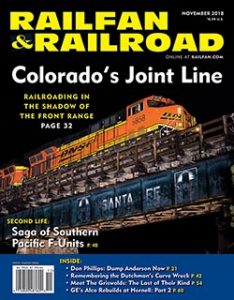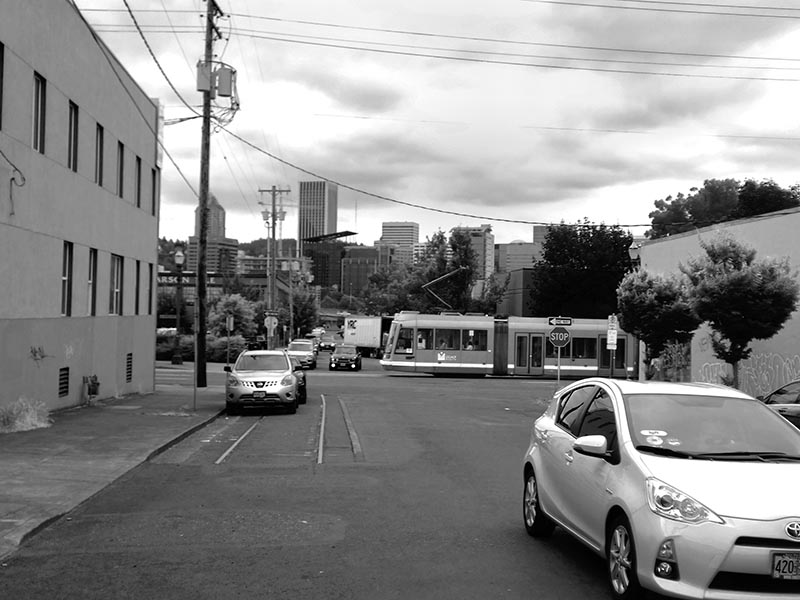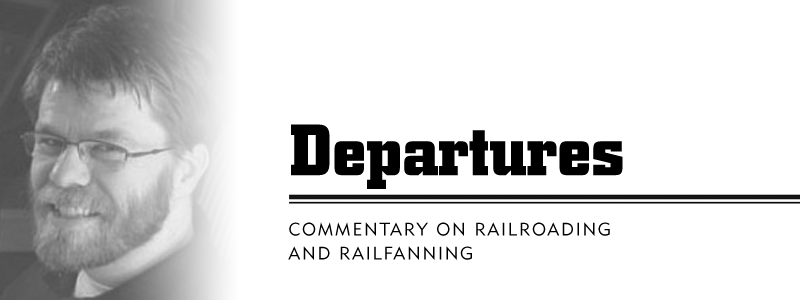 Many years ago, my interest in making photographs of railways waned. Did the world really need another photo of a General Electric widecab diesel? Was there really anything I could do to make my photos any more unique than the next guy’s? I was burnt out.
Many years ago, my interest in making photographs of railways waned. Did the world really need another photo of a General Electric widecab diesel? Was there really anything I could do to make my photos any more unique than the next guy’s? I was burnt out.
I knew I had to make a dramatic change, so I decided I would pick a single subject and stick to it for awhile. Instead of making random photos of random trains, I made my subject something unusual — abandoned railway lines. And since my hometown of Portland, Ore., had a rich industrial past, I decided to further concentrate on the former switching districts of the city.
What is a switching district? For my purposes, I mean short branch lines in urban environments. Built in the late 19th and early 20th centuries, often directly in the city streets, these lines and their many spurs were once the main way that cargo moved to and from urban warehouses and factories.
By the postwar era, urban switching districts were on borrowed time. Trucks ate into a lot of the traffic. In search of lower overhead and greater efficiencies, companies often relocated to suburban and exurban sites. Meanwhile, cities frequently sought to eliminate the safety hazard of trains and automobiles sharing the same street.
By the time I began my project, many of Portland’s lines were long gone. Sometimes rails still showed in the pavement for block upon block, other times there were only the faint traces to show that a street once had rail service. Typical tells included boxcar-height loading docks, overhead signs meant to warn train-top crewmen of low clearances, and buildings with cut corners or rounded walls meant to make room for a curving track. With so little left, the project was often a bit like a scavenger hunt, an enjoyable challenge in learning to “read” the cityscape. Its documentary aspects, meanwhile, gave me a sense of doing something with purpose, something esoteric yet still valuable.

Much of Portland, Ore., has changed since the author began photographing its abandoned switching districts in 2008, but this piece of former Spokane, Portland & Seattle spur on S.E. Salmon survives… for now. Alexander b. Craghead photo
I named my effort the Portland Switching District Project, and it took eight months to complete. I created interlocking Flickr albums and a website, put together a small exhibit at a local civic organization, and wrote a few articles about it. Almost as importantly, I rediscovered the pleasure of puzzle-solving and exploration that comes from photography.
Earlier this year, it occurred to me that it has been ten years since I had completed the project. Though I don’t live in Oregon anymore, I decided to revisit the project, trying to recreate the same views I shot in 2008, to see how much has survived, and how much has changed. Presently, I am about one-third through this re-photography project, and hope to complete it by year’s end.
Revisiting the subject after a decade has led to all sorts of discoveries, from unexpected surviving fragments, to dramatically altered landscapes. The most unexpected pleasure was how the passage of time could make a narrow, focused project such as this grow in satisfaction. The next time you feel stuck in a rut, consider taking on a project special to you. It may surprise you how much you’ll value the decision later.
—Consulting Editor ALEXANDER BENJAMIN CRAGHEAD is a transportation historian, photographer, artist, and author.


